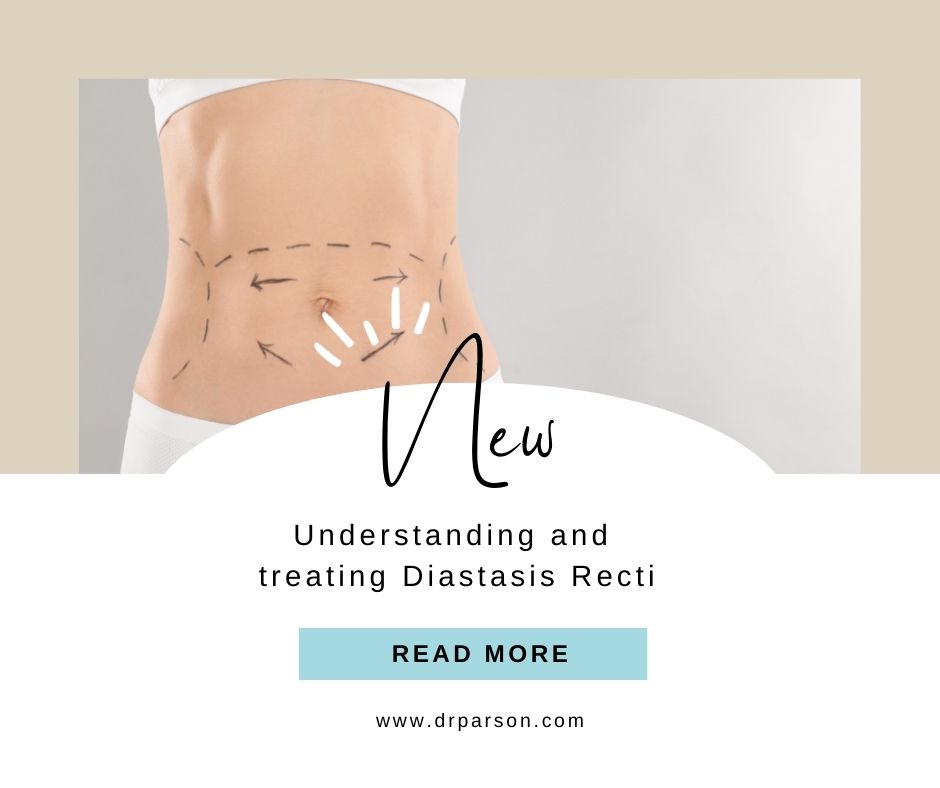
15 Jul Understanding and treating diastasis recti
Understanding Diastasis Recti – with Dr. Shaun Parson
Pregnancy and childbirth bring new experiences and discoveries, even for seasoned mothers. No matter how much you prepare, some surprises are inevitable. For many women, one unexpected condition is diastasis recti.
What is Diastasis Recti?
Diastasis recti is a condition where the abdominal muscles separate along the midline of the stomach. Although anyone can develop this condition, it is most commonly seen in women who are or have been pregnant. The separation occurs to accommodate the growing baby and uterus.
Despite sounding alarming, this separation is a normal part of pregnancy. The connective tissue between the abdominal muscles, called the linea alba, stretches to allow the muscles to pull apart. After childbirth, this tissue typically tightens, pulling the muscles back together.
When Does Diastasis Recti Become a Concern?
Diastasis recti becomes concerning if the separation exceeds 2.7 centimeters and remains six or more weeks after childbirth. Even then, the issue may resolve naturally or with targeted exercises.
How Common is Diastasis Recti?
Diastasis recti is very common, affecting the majority of mothers to some degree. For about half of these women, the condition resolves on its own within 12 months after delivery. However, many cases go undiagnosed. It’s important for mothers to be aware of this condition so they can monitor for signs and seek treatment if necessary.
Health Problems Associated with Diastasis Recti
While a distended stomach is the most noticeable symptom, diastasis recti can lead to several health issues, including:
- Indigestion
- Back pain
- Stress incontinence
- Hernia
If you experience these problems, it’s important to check for diastasis recti.
How to Test for Diastasis Recti at Home
While an official diagnosis requires a medical professional, you can perform an easy at-home test:
- Lay on your back on a firm surface.
- Bend your knees.
- Curl your chin towards your chest, engaging your abdominal muscles.
- Use your fingers to locate the linea alba, starting at your belly button and moving upward.
- Press down gently. If your fingers sink easily, it may indicate abdominal separation.
- Check the width of the gap. One finger width is normal; more than one may indicate an issue.
Treatment Options After Understanding Diastasis Recti
Several treatment options are available, including at-home exercises, physical therapy, and surgery.
Non-Surgical Treatments
Exercise and physical therapy are often the first steps in treating diastasis recti. These methods can strengthen the abdominal muscles and may resolve the separation. Even if these treatments do not fully correct the problem, they can improve your overall condition and make surgical options less invasive.
Surgical Treatment
If non-surgical methods are insufficient, surgery may be necessary to bring the abdominal muscles back together. This procedure is often considered cosmetic and is performed as part of a tummy tuck. During the surgery, Dr. Parson will remove excess skin and fat while suturing the connective tissue between the rectus muscles to pull them closer together.
Compared to a standard aesthetic tummy tuck, this surgery is more complex and involves a longer recovery time. However, if you have health insurance, the procedure may be partially covered.
See here for mommy makeover before and after photos to see how surgery might help you.
Comprehensive Options
Dr. Parson can tailor the surgery to your needs. Whether you seek muscle repair alone, a comprehensive tummy tuck, or a full mommy makeover, Dr. Parson will work with you to achieve the best results.
Read more about what diastasis recti is here.
